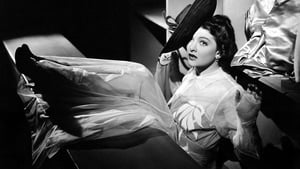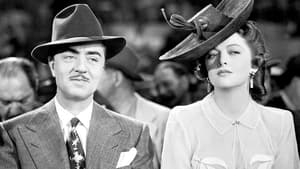Contact: info@alwanfilm.com
Video Sources 0 Views

Synopsis
Review: Shadow of the Thin Man 1941 Colorized – A Classic Noir in the Golden Age of Cinema

Introduction
“Shadow of the Thin Man” (1941) stands as a quintessential example of the American film noir genre, a cinematic classic that seamlessly blends mystery, comedy, and the charm of its iconic leads. Released during the Golden Age of Hollywood, this film is the fourth installment in the highly successful “Thin Man” series, following the adventures of Nick and Nora Charles. In this article, we delve into the significance of “Shadow of the Thin Man” within the context of its time, explore its plot and characters, and examine the lasting impact of this beloved film on both the noir genre and cinematic history.
Check The Full Colorized Movies List
Check Our Colorized Movies Trailer Channel
Understanding Shadow of the Thin Man 1941 Colorized: Director, Cast, and Genre
Directed by W.S. Van Dyke, “Shadow of the Thin Man” continues the tradition of its predecessors by combining mystery with wit and elegance. Van Dyke, a veteran director known for his swift shooting schedules and knack for crafting engaging narratives, helmed all six films in the “Thin Man” series, ensuring a consistent tone and style throughout.
The film stars William Powell and Myrna Loy as the iconic detective couple Nick and Nora Charles, whose on-screen chemistry has become the stuff of legend. Powell’s portrayal of the debonair, quick-witted Nick Charles, combined with Loy’s effortless charm as his equally sharp and sophisticated wife, Nora, captivated audiences and helped define the screwball comedy-mystery genre.
“Shadow of the Thin Man” belongs to the film noir genre, albeit with a lighter, more humorous twist than typical noir films. While it contains the genre’s hallmarks—such as crime, moral ambiguity, and a dark, shadowy aesthetic—it is also infused with the sparkling dialogue and banter that set the “Thin Man” series apart from other noir offerings of the era.
Exploring the World of Shadow of the Thin Man 1941 Colorized: Plot and Characters
“Shadow of the Thin Man” once again places Nick and Nora Charles at the center of a tangled web of intrigue and murder. The plot begins with Nick attempting to enjoy a quiet life away from detective work, focusing instead on raising his son with Nora. However, their plans for a peaceful day at the racetrack are interrupted when a jockey is murdered, drawing Nick back into the world of crime-solving.
As Nick delves into the case, he encounters a colorful cast of characters, including the shady bookie Link Stevens (portrayed by Barry Nelson), the wealthy and unscrupulous nightclub owner Fred Macy (played by Joseph Anthony), and the ambitious newspaper reporter Paul Clarke (portrayed by Richard Hall). Each character is imbued with the moral complexities and hidden motives typical of the noir genre, creating a suspenseful atmosphere where everyone is a potential suspect.
The narrative unfolds with a blend of humor and tension, as Nick uses his sharp intellect and unorthodox methods to unravel the mystery. Meanwhile, Nora provides her own brand of support, balancing her role as a devoted wife and mother with her keen interest in Nick’s investigations. Their interactions, filled with playful banter and mutual respect, remain one of the film’s enduring strengths, showcasing the unique dynamic that made the “Thin Man” series so beloved.
The Art of Noir: Cinematic Techniques in Shadow of the Thin Man 1941 Colorized
“Shadow of the Thin Man” exemplifies many of the stylistic elements associated with film noir, albeit with a more polished and sophisticated approach than some of its darker counterparts. The film’s cinematography, crafted by William H. Daniels, makes effective use of shadows and lighting to create a sense of mystery and suspense. The contrast between light and dark not only serves to heighten the tension but also reflects the moral ambiguity of the characters and the world they inhabit.
Daniels, who won an Academy Award for his work on “The Naked City” (1948), brings his expertise in noir aesthetics to “Shadow of the Thin Man.” His use of low-key lighting, stark contrasts, and deep shadows adds a layer of visual complexity to the film, enhancing its mood and atmosphere. The film’s setting—a mix of opulent interiors and seedy underworld locales—further contributes to the noir tone, juxtaposing the glamorous lifestyle of Nick and Nora with the gritty reality of the criminal world.
The film’s pacing, under Van Dyke’s direction, is brisk and efficient, maintaining the audience’s engagement without sacrificing narrative depth. The dialogue, penned by screenwriters Harry Kurnitz and Irving Brecher, is sharp and witty, blending humor with the seriousness of the crime at the story’s center. This balance of light and dark, humor and suspense, is a hallmark of the “Thin Man” series and one of the reasons for its enduring appeal.
The Evolution of the Thin Man Series
“Shadow of the Thin Man” represents an important evolution within the “Thin Man” series, both in terms of its characters and its approach to storytelling. By 1941, Nick and Nora Charles had become beloved icons of American cinema, and the series had established a successful formula of combining mystery with comedy. However, “Shadow of the Thin Man” also reflects a shift in tone, with a greater emphasis on the darker, more complex elements of noir, which were becoming increasingly popular in Hollywood at the time.
The film also marks a subtle but significant development in the relationship between Nick and Nora. While the earlier films in the series focused on their carefree lifestyle and mutual love of adventure, “Shadow of the Thin Man” introduces the responsibilities of parenthood into the equation. This evolution adds depth to their characters and provides new dynamics to explore within their relationship, as they navigate the challenges of raising a child while remaining involved in Nick’s detective work.
Themes Explored in Shadow of the Thin Man 1941 Colorized
“Shadow of the Thin Man” explores several themes common to the film noir genre, including crime, deception, and the blurred lines between right and wrong. The film delves into the murky world of gambling, corruption, and murder, exposing the dark underbelly of society beneath its glamorous facade.
One of the central themes of the film is the idea of appearances versus reality. Throughout the film, characters are not always what they seem, and the truth is often hidden beneath layers of deceit and manipulation. This theme is embodied in the character of Nick Charles, who, despite his outward appearance as a dapper, carefree socialite, possesses a sharp mind and a deep understanding of the darker aspects of human nature.
Another theme explored in the film is the complexity of moral choices. Nick’s reluctance to return to detective work is contrasted with his sense of duty and his desire to see justice served. This internal conflict reflects the broader moral ambiguity that is a hallmark of film noir, where characters are often forced to make difficult decisions in a world where the lines between good and evil are not always clear.
The Legacy of Shadow of the Thin Man 1941 Colorized
“Shadow of the Thin Man” holds a special place in the pantheon of classic American cinema, not only as a successful installment in the “Thin Man” series but also as a film that contributed to the evolution of the noir genre. Its blend of mystery, humor, and sophisticated style set a standard for subsequent noir films, influencing filmmakers for generations to come.
The film’s legacy is also tied to the enduring appeal of its lead actors, William Powell and Myrna Loy. Their performances in “Shadow of the Thin Man” and the other films in the series cemented their status as one of Hollywood’s most beloved on-screen couples. Their chemistry, wit, and charm continue to captivate audiences, making the “Thin Man” series a timeless classic that remains relevant and entertaining to this day.
The Influence of Shadow of the Thin Man 1941 Colorized on Later Cinema
The influence of “Shadow of the Thin Man” extends beyond its immediate impact as a successful film within its series. The film’s approach to blending comedy with mystery and its use of noir elements can be seen in later films and television series that sought to replicate its winning formula. The witty banter and strong chemistry between the lead characters set a precedent for future detective duos, both on the big screen and in serialized television dramas.
The film also contributed to the popularization of the detective genre, inspiring numerous adaptations, imitations, and homages in the years that followed. From the private eyes of classic detective fiction to the crime-solving duos of modern television, the influence of Nick and Nora Charles is evident in the enduring popularity of the genre.
Moreover, “Shadow of the Thin Man” helped pave the way for the blending of genres, particularly the combination of comedy and crime. This hybrid approach has since become a staple in film and television, with countless productions drawing inspiration from the balance of light and dark, humor and suspense, that the “Thin Man” series perfected.
Reception and Critical Analysis of Shadow of the Thin Man 1941 Colorized
Upon its release in 1941, “Shadow of the Thin Man” was met with widespread acclaim from both audiences and critics. The film was praised for its sharp writing, engaging performances, and deft handling of the mystery plot. Audiences, already enamored with Nick and Nora Charles from the previous films, welcomed their return with enthusiasm, ensuring the film’s commercial success.
Critics highlighted the film’s ability to maintain the high standards set by its predecessors while introducing new elements that kept the series fresh and engaging. The film’s blend of humor and suspense, combined with its stylish direction and cinematography, was noted as a key factor in its success.
However, some critics also noted that by the fourth installment, the formula was beginning to show signs of wear, with certain plot elements and character interactions feeling familiar. Despite these observations, “Shadow of the Thin Man” was generally regarded as a worthy continuation of the series, maintaining the charm and wit that had made the “Thin Man” films so popular.
In the decades since its release, “Shadow of the Thin Man” has continued to receive positive assessments from film historians and critics. Its place within the broader context of the noir genre has been re-evaluated, with some scholars arguing that the film represents a transitional moment in the development of noir, blending traditional mystery elements with the darker, more psychologically complex themes that would come to define the genre.
Where to Watch Shadow of the Thin Man 1941 Colorized Online
For those interested in experiencing the charm and intrigue of “Shadow of the Thin Man,” the film is readily available on various streaming platforms. Classic film enthusiasts can find it as part of the broader “Thin Man” series, often included in collections or available for individual rental or purchase. Major streaming services such as Amazon Prime Video, Apple TV, and the Criterion Channel often feature the film, allowing new generations of viewers to enjoy this cinematic gem.
FAQs About Shadow of the Thin Man 1941 Colorized
Q: How does “Shadow of the Thin Man” compare to the other films in the series?
A: “Shadow of the Thin Man” maintains the high standards of its predecessors while introducing darker, more complex noir elements. It balances the series’ trademark humor with a more intricate mystery plot, making it a standout entry in the “Thin Man” series.
Q: What is the significance of the title “Shadow of the Thin Man”?
A: The title suggests the looming presence of Nick Charles as a detective, even as he tries to leave that life behind. The “shadow” implies that his reputation and the expectations of others continue to follow him, drawing him back into the world of crime-solving.
Q: Are there any notable cameos or supporting performances in the film?
A: Yes, the film features a strong supporting cast, including Barry Nelson as the duplicitous bookie Link Stevens and Richard Hall as the determined reporter Paul Clarke. Their performances add depth and tension to the narrative, complementing the central mystery.
Q: How does the film handle the balance between comedy and mystery?
A: “Shadow of the Thin Man” expertly balances comedy and mystery, with sharp dialogue and witty banter offsetting the darker elements of the plot. The interplay between Nick and Nora Charles provides much of the film’s humor, while the suspenseful mystery keeps audiences engaged.
Conclusion
“Shadow of the Thin Man” (1941) is a masterful blend of mystery, comedy, and noir, showcasing the enduring appeal of Nick and Nora Charles and their adventures. Directed by W.S. Van Dyke, and featuring standout performances by William Powell and Myrna Loy, the film represents a pivotal moment in the evolution of the noir genre, as well as a beloved entry in the “Thin Man” series.
As we look back on “Shadow of the Thin Man,” it is clear that its legacy endures, both as a classic film in its own right and as a key influence on the genres of mystery and noir. Its witty dialogue, complex characters, and stylish direction continue to captivate audiences, ensuring its place in the annals of cinematic history.
Whether you’re a longtime fan of the series or a newcomer to the world of Nick and Nora Charles, “Shadow of the Thin Man” remains a must-watch for anyone interested in the golden age of Hollywood, the evolution of film noir, or the timeless charm of classic American cinema.














